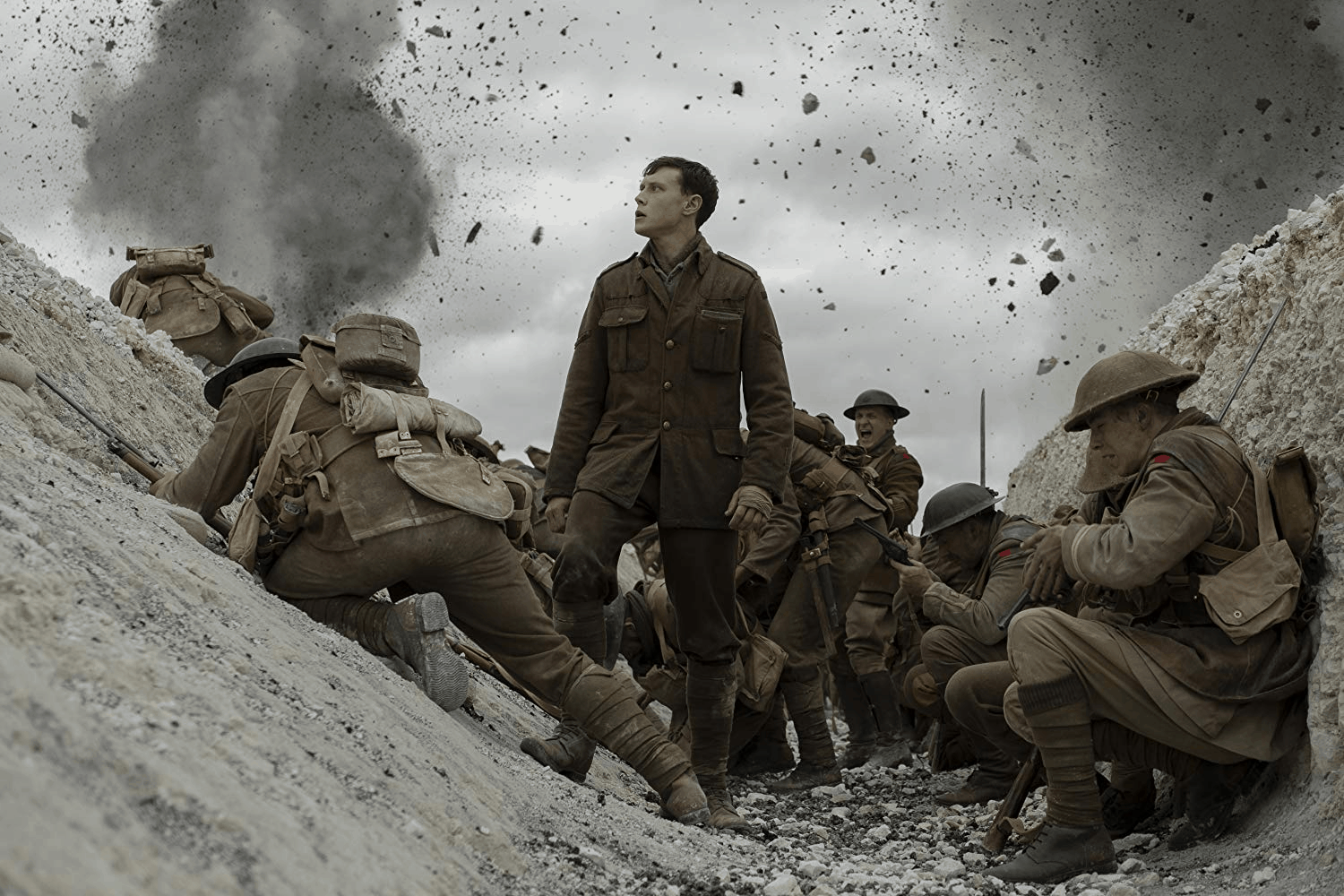Warning: This article contains spoilers.
1917 is arguably one of the best war films to come out in a long time, and it has 2 Golden Globes awards and 10 Oscar nominations to prove it. All these awards and nominations recognize the movie’s uniqueness. For one thing, it’s not often that you find a war film with a totally fictional plot set in World War I. It was inspired by stories told to director Sam Mendes by his grandfather, Alfred H. Mendes, who served with the British Army during the Great War. Another draw is its beautiful and skillful cinematography that gives the viewer the impression that the whole movie was filmed in one single take.
Yet there is something more to 1917 that makes it great: It does not glorify war. While many other movies, TV shows, and even video games show how exciting and adrenaline-filled combat can be, 1917 confronts the viewer with the war’s darkness. Instead of being filled with zeal to enlist in the military at the end of the film, we are left saying, “I would never want to fight in a war like that.” 1917 shows the reality of the deadliest war the world had ever fought at that point in history.
And yet, just as the viewer is made to feel disgust in reaction to all the horrors, we’re shown beauty in the midst of all of it. How?
The horrors of war are immediately made apparent in the film. As the camera follows the two soldiers closely, the viewer gets plenty of time to view the piles of dead bodies–belonging to both combatants and non-combatants–buried in dirt or floating in water. One’s heart aches upon viewing land that was surely once beautiful and unscathed, ravaged by artillery fire. The ruddy, boyish faces of the soldiers would make anyone, mother or not, cry for a youthful innocence lost–just another casualty of war.
But where is the beauty?
Perhaps war itself is not beautiful, rather war makes known in little ways the beauty that humanity is capable of. We accompany these two soldiers and we witness the bond of brotherhood between them; a brotherhood that might have only begun because of war. We see their dedication to delivering an order that would save thousands of soldiers’ lives from running into a trap. Their pieta-like moment when Lance Corporal Blake is dying in the arms of Lance Corporal Schofield. Schofield’s encounter with the French woman with a baby. Then Schofield’s scene with Blake’s brother where he breaks the news of his brother’s death.
All these moments were breaks from the horror. These moments were beautiful, and they only were possible because of the war. All these moments of beauty are what should be remembered in a story like this, but never separated from the story of the horrors.
If there were one word to describe 1917, it would be real. We saw the realness of war, which is not just about war but really humanity both at its best and worst.
———
This piece was co-written with Josef Rodriguez, S.J.
Photo from IMDb, used under Fair Use Laws


